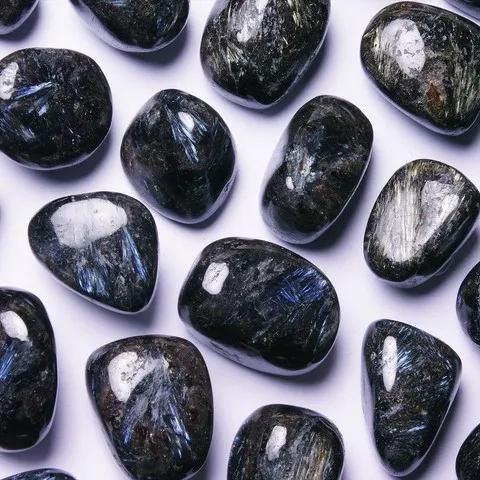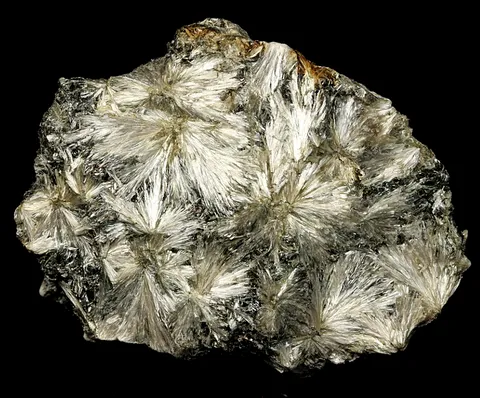ANTHOPHYLLITE
Class : Silicates
Subclass : Inosilicates
Crystal System : Orthorhombic
Chemistry : (Mg,Fe)7Si8O22(OH)2
Rarity : Uncommon
Anthophyllite belongs to the group of orthorhombic amphiboles and forms two series with ferro-anthophyllite and magnesio-anthophyllite. It is a typical amphibole of metasomatic magnesian rocks, in metamorphic rocks of medium to strong gradient (gneiss, amphibolite, metaquartzite, granulite) and more rarely in schistous formations derived from clayey sediments or basic to ultrabasic magmatic rock (peridotites, serpentines, etc...). Its name comes from the Latin anthophyllum (clove), due to its brown color. It generally occurs in fibrous, asbestiform masses, reaching 25 cm, then called amosite but also qualified as brown asbestos. It rarely occurs in crystals in the form of orthorhombic prisms, of a brownish-green to brownish-grey and brown color. It is commonly polished and used as an ornamental or jewelry stone, while in the form of asbestos it was used as a fireproof material, thermal and electrical insulation panels, etc...
Anthophyllite in the World
Twinning
No known twins for this mineral species.
Fakes and treatments
No fake recorded for this mineral species, but often confused with astrophyllite (much rarer) on the mineral market.
Hardness : 5.5 to 6
Density : 2.85 to 3.37
Fracture : Conchoidal
Trace : White to gray
TP : Translucent to transparent
RI : 1.598 to 1.697
Birefringence : 0.017 to 0.023
Optical character : Biaxial +
Pleochroism : Visible
Fluorescence : None
Solubility : Hydrofluoric acid
Magnetism : Paramagnetic
Radioactivity : None


